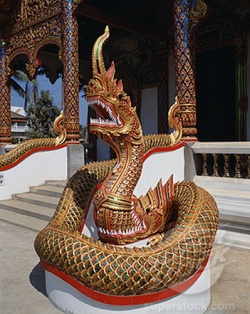Nagaraja
Nagaraja is a Tamil word from naga (snake) and raja (king) meaning "king of snakes". It is applied to three main deities, (Sheshanaga), Takshaka, and Vasuki. Ananda, Vasuki and Takshaka are brothers, children of Kashyapa and Kadru, who are the parents of all snakes.
Shesha, Vasuki, and Takshaka
Shesha, the eldest brother, was a devotee of Vishnu, and represents the friendly aspect of snakes, as they save food from rodents. Lord Vishnu is always on continuous meditation (Yoganidra) with Ananda forming a bed for him, and this posture is called Ananda-Sayana.
Vasuki, the younger one was a devotee of Lord Shiva. Lord Shiva always wears Vasuki around his neck.
Takshaka represents the dangerous aspect of snakes, as they are feared by all due to their venom.
Temples
At Nagercoil in Kanniyakumari district of Tamil Nadu, a temple dedicated to Nagaraja exists.
There is another famous temple named Mannarasala in Alleppey district of Kerala. The deity in this temple embodies both Anantha and Vasuki into one.
A temple devoted to Nagaraja exists in Poojappura of Thiruvananthapuram District in Kerala, India. It is known as Poojappura nagarukavu Temple. The uniqueness of this temple is that here the family of the Nagaraja including Nagaramma, Queen of Naga and Nagakanya, Princess of the Naga kingdom is placed inside a single temple.
